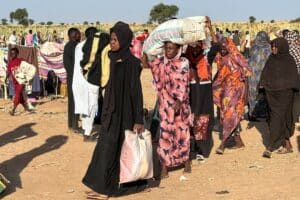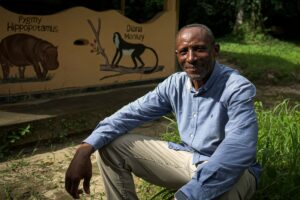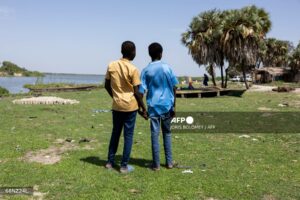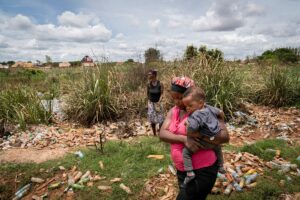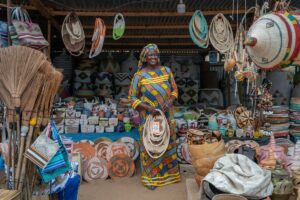Narok, Kenya
Friday, August 22, 2025
All that remains of Fred Ngusilo’s home, which blended into the Mau Forest, is a bag and a shoe, lying among scattered pieces of wood. His Ogiek hunter-gatherer community, one of the last in Africa, has been driven from its ancestral lands and fears for its survival.
At the end of 2023, Kenyan forest rangers and security forces arrived by surprise, equipped with axes and hammers, evicting hundreds of people in a matter of days, according to the 38-year-old human rights activist. Several of them say they were given no reason and no warning.
“When I come here, I feel so sad. It brings tears to my eyes,” says Mr. Ngusilo, gazing at the remains of his family home a few dozen kilometers from the town of Narok in the Rift Valley.
Some Ogiek people continue to raise their livestock there, but are regularly chased away by forest rangers.
The apparent calm of the country’s largest forest, a water tower that supplies millions of Kenyans, contrasts with the stories of decades of persecution and expropriation reported by its indigenous people, which the Kenyan authorities justify in the name of preserving the area.
This argument has been refuted by the African Court on Human and Peoples’ Rights.
In Kenya, hunter-gatherers expelled from their ancestral forests
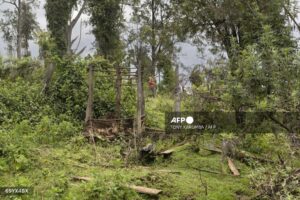
The calm of the Mau Forest contrasts with stories of decades of persecution and dispossession recounted by its indigenous people, all in the name of conservation.
The African Court on Human and Peoples’ Rights (AfCHPR) ruled in 2017 and 2022 that the evictions were illegal, ordering Nairobi to pay reparations equivalent to more than $1 million and to recognise their ancestral lands. (Photo by Tony KARUMBA / AFP)
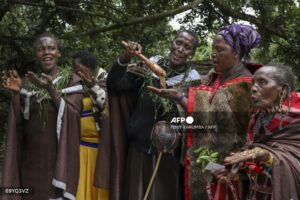
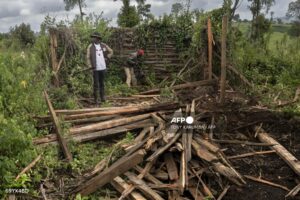
Decisions handed down in 2017 and 2022 by this continental court ruled the evictions illegal, ordering Nairobi to pay the Ogiek reparations equivalent to more than €1 million and to recognize their ancestral lands. But Kenya has still not complied.
– Difficult daily life –
The Ogiek People Development Program (OPDP), an NGO protecting this subgroup of the Kalenjin ethnic group, has more than 50,000 members, who were once scattered across the foothills of Mount Elgon (west).
Many of them are now forced to rent houses outside the forest, deprived of their livelihoods.
“Before, it was good: no rent, no need to buy wood or food. Now we have to buy everything,” laments Fred’s grandmother, Janet Sumpet Ngusilo, 87.
So, in addition to their battles in court, the Ogiek have been organizing cultural festivals in recent years.
These ceremonies, marked by nostalgia and calls for justice, have brought together several hundred people this month.
“I used to survive on meat and honey. Young people today don’t know this life,” says Salaton Nadumwangop.
“I had more than 500 beehives (…) we laid leaves on the ground, covered ourselves, and slept until morning.



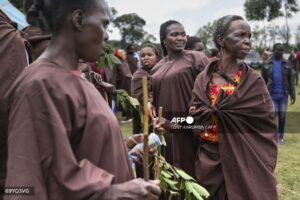
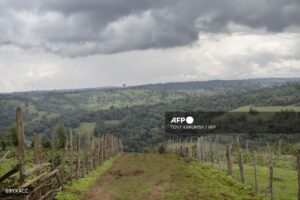
“The forest is our life,” adds the 55-year-old man wearing a fur hat adorned with beads resembling bees.
Before recounting the violence of the three evictions he endured: while fleeing, some were attacked by hyenas and leopards, and “many people died,” he says.
– “Completely lost” –
Josphat Lodeya, head of the government unit responsible for minorities and marginalized people, promised at the last Ogiek festival to enforce the verdicts of the court in Arusha, Tanzania, without giving further details.
“We are a small people. Even if we try to vote, they consider us worthless. So they despise us,” said Mr. Nadumwangop.
The authorities “are trying to sell us out,” said Fred Ngusilo, who said he was ready to die to return home.
When he returned in August to the remains of his family home, he was harassed by forest rangers who threatened to arrest him.
When contacted, KFS, the Kenyan Forest Service, was not immediately available for comment.
The greed of the authorities, eager for the money from timber, is also leading to the disappearance of the forests, some Ogiek complain. More than 20% of the Mau Forest has disappeared since the 1980s, according to various studies.
Several members of the community also accuse carbon credit projects, encouraged by President William Ruto, of being behind the expropriations of 2023.
These allegations are difficult to prove, even though several lawyers and observers consider them plausible.
Salaton Nadumwangop says he is “very concerned.” “If things continue like this, the Ogiek will disappear,” he laments. “We will be completely lost.”
Humaniterre with AFP
Photo credits: Tony Karumba

